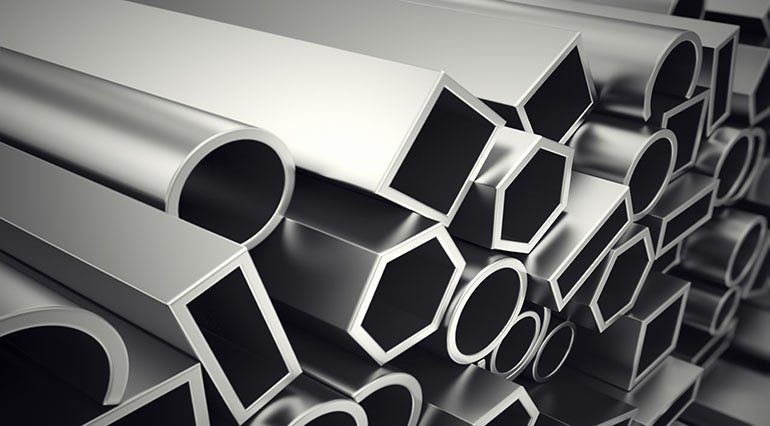Natural Anodising (Clear/Silver)
The process of anodising aluminium involves submerging the metal in an acid electrolyte bath and passing an electrical current through the solution. The bath has a cathode attached to it and the aluminium acts as the anode. When the electrical current is passed through, oxygen forms on the surface of the aluminium creating an aluminium oxide or anodic layer. The quality of this anodic layer depends on many things including the temperature and concentration of the solution as well as the current passed through.
The thicker the anodic layer created, the greater the corrosion resistance and typically this layer is between 5 to 25 microns thick. The thickness of the layer is determined by the length of time the current is passed through the solution and the longer the metal spends in this state, the thicker the anodising layer.
Anodising is most commonly used for improved corrosion resistance on certain types of aluminium alloys. Aluminium alloys that are subject to marine environments typically benefit from anodising. Ship hulls, dock components, and oil rig structures are common examples of these.
Benefits of Natural Anodising:
Durability: The anodising process creates a hard, protective layer that's resistant to scratches, wear, and tear. This makes it ideal for high-traffic areas.
Corrosion resistance: The anodising process creates a barrier that protects the metal from corrosion and rust. This makes it suitable for marine applications.
Appearance: The anodising process gives the metal a metallic sheen and a wide range of colours, including natural silver, bronze, and grey.
Ease of cleaning: Anodised surfaces are easy to clean with a cloth or mild detergent.
Environmental benefits: Anodised aluminium is 100% recyclable, and the production process is environmentally friendly.
Long-term durability: Anodised surfaces can last up to 20 years without showing signs of wear and tear.
Abrasion resistance: The anodising process creates a hard layer of aluminium oxide that's very resistant to abrasion.
Uniform surface finish The anodising process creates a uniform surface finish on all metal shapes and textures.
-
ISO 7599 – Anodising of Aluminium and Its Alloys: Measurement of Anodic Oxidation Coating Thickness
Scope:
ISO 7599 specifies requirements, characteristics, and testing methods for anodic oxidation coatings on aluminium and aluminium alloys. It applies to anodised aluminium used in industrial, architectural, automotive, and decorative applications.
Key Requirements:
Coating Thickness: Defines different anodising thicknesses depending on the application (typically 5–25 microns or more).
Sealing Quality: Ensures that anodised coatings are properly sealed to prevent staining, corrosion, and surface deterioration.
Colour and Appearance: Covers natural, dyed, and electrolytic coloration techniques for aesthetic purposes.
Testing Methods:
Measurement of coating thickness using eddy current, optical, or gravimetric methods.
Tests for sealing efficiency, abrasion resistance, and corrosion resistance.
Applications: Used in architectural facades, aerospace, automotive components, and decorative finishes.
Additional Notes:
Ensures durable, high-quality anodised coatings for various industries.
Provides standardised testing methods for anodic coatings.
Replaces BS EN 12373, aligning with modern international practices.
-
ISO7599
BS 1615 / BS EN 12373-1 2001
DEF Stan 03-25
MIL-A-8625 Type III
-
Ordinarily, 5-30 microns (µ)



